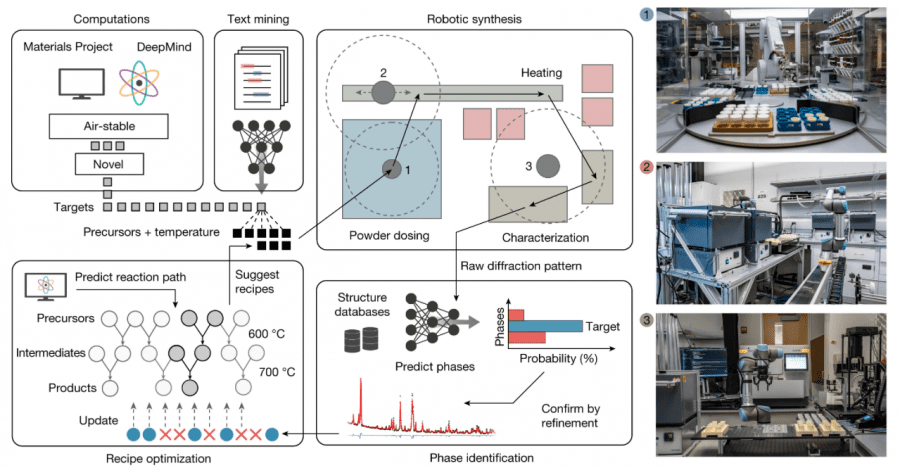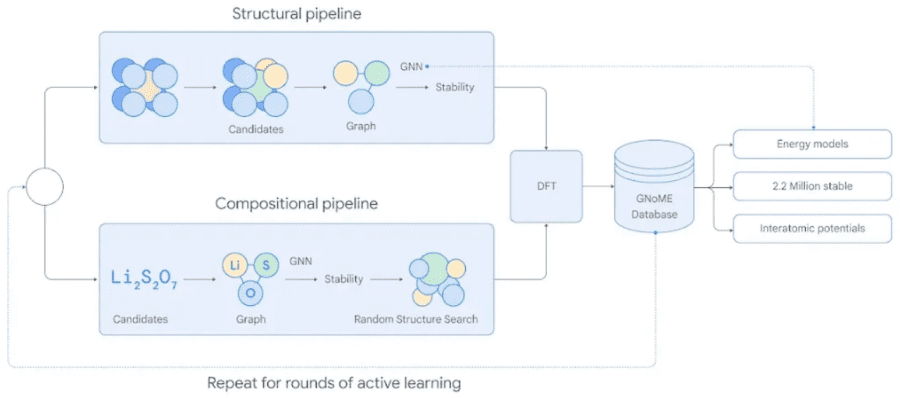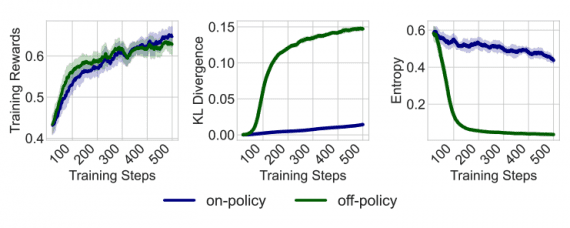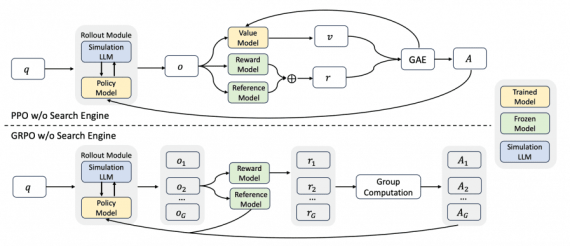
DeepMind has developed the graph neural network GNoME, predicting material stability. GNoME has identified 2.2 million new materials, with 380 thousand deemed stable for application in developing computer chips, batteries, and solar panels.
Before the advent of GNoME (Graph Networks for Materials Exploration), only 48 thousand stable inorganic crystals were known. The model increased this number by almost 9 times. DeepMind claims the model’s output is equivalent to 800 years of researchers’ work.
Notably, 52 thousand new layered compounds, similar to graphene, were discovered. These hold potential applications in electronics and superconductor physics. Previously, around a thousand such materials had been identified. Additionally, 528 potential lithium-ion conductors were found (25 times more than known), with potential use in enhancing rechargeable battery performance.
GNoME employs two pipelines to search for stable materials. The structural pipeline generates candidates with structures resembling known crystals, while the compositional pipeline uses a more randomized approach based on chemical formulas. Output data from both pipelines are evaluated using density functional theory, and the results are added to the GNoME database, informing the next round of active learning.

GNoME, a graph neural network (GNN) trained on crystal structures, increased the accuracy of material stability prediction from 50% (previous models) to 80%. The forecasting efficiency surged from 10% to over 80%, promising a significant reduction in computational resource requirements for designing new materials. 736 predicted GNoME crystals have already been experimentally synthesized.
GNoME’s predictions are publicly available. The model and dataset can be accessed here.






Well thats all cool but if you want to find a exotic flowers delivery service in Thailand visit hiflydelivery.com